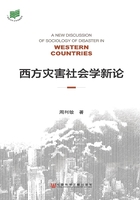
第五节 小结:灾害集体行动柔性治理及理论再思考
在灾害集体行动中,既有灾区内灾民的集体行动,又有灾区外民众的集体行动;既有“天灾”情境定义中的集体行动,也有“人祸”情境定义中的集体行动;既有利他性集体行动,也有利己性集体行动;既有组织性的集体行动,也有非组织性的集体行动。本章通过集体行动视角对灾害进行了较为深入的探讨和分析,初步建立了灾害集体行动类型的分析框架。在此基础上,笔者想进一步强调以下几方面内容。
第一,本章表明灾害集体行动治理具有复杂性和多样性,灾害爆发后会同时出现灾区内与灾区外两股集体行动交织在一起的复杂情形,使得灾害治理具有“共同行动”与“风险共享”(shared risk)的特点。而且,不仅是自然因素,灾区内外的政治、经济和意识形态的相互纠葛也是集体行动产生的重要原因。如何在相互冲突的集体行动目标中获得平衡?如何在复杂的灾害情境中实现最佳的治理效果?这就要求政府不但需要进行有效的行政管理,而且需要完成政治上的治理工作。
第二,本章将灾民的集体行动划分为两种类型,在“天灾”情境定义中,灾民的集体行动只有搜索信息和定义情境两个阶段。在这种情境中,利他主义和互助精神蔓延,灾民尝试将灾前规范与制度带到灾后情境中,对于外界援助会有较高的感激心理和满意度。这对于灾害救助有积极的促进作用,也是社会各界和政府所希望的发展方向。而在“人祸”情境定义中,灾民的集体行动则会经历搜索信息、定义情境和咎责三个阶段。灾情越严重,灾民对灾害的解读就越倾向于“人祸”因素,就会将灾害责任的焦点从“宿命论”转移到“人祸论”上。原有的价值规范体系无法再为集体行动提供依据,新的价值规范就会浮现,并会把当下的社会情境定义为“不正义”,这为集体行动提供了某种正当性与合理性,从而使得灾民投入追究灾害责任主体的集体行动中。这不仅会影响灾害救助进程,而且会对既有的政治体系造成冲击,甚至可能引发政治危机。
第三,本章强调“非结构式减灾”(non-structural mitigation)政策应成为灾害集体行动风险防范和治理的重要机制。过去人们往往重视“结构式减灾”(structural mitigation)预防政策,强调以工程技术解决天然灾害对于生命与财产造成的威胁,然而近年来人们并没有因为采取“结构式减灾”措施而降低天然灾害所造成的损失,损失反而逐年增加。因此,越来越多的学者主张以“非结构式减灾”政策降低未来天然灾害可能带来的损失,其重要性已经超过“结构式减灾”政策。“非结构式减灾”政策强调政府要更多地通过社会、财政、保险、监测与预警系统和灾害防救教育等非工程技术手段对灾害进行综合治理,同样,这也适合于灾害集体行动的治理。灾害治理也应改变以往单纯依靠技术或其他单一手段管理的策略,应从信任、公私协力、柔性治理、危机管理和社会公平等角度进行综合治理,如此才能发挥灾害集体行动治理的最佳效果。
第四,本章强调灾害治理的最高境界是通过媒体和民间力量的监督,协调相互冲突的集体行动,使自发性、利己性和非组织性集体行动被整合成救灾和灾区复原的重要力量。以往的研究虽然强调灾害救助要着重对受灾户进行补偿,但其实并没有抓住问题的关键。本章认为,更为重要的是对灾区内的社会不平等和政治分配不公平进行全面整改,从而获得灾民、捐助者、志愿者和全国民众的广泛认同。这才是更为重要的政治工程和治理策略。因此,只有在对灾害集体行动本质深入了解的基础上,才能有效推进灾害治理,才能真正发挥灾害集体行动的正面效应而规避其负面风险。
总之,在面对日益复杂的灾害问题时,只有引入集体行动分析视角,才能呈现多元和有意义的灾害社会学研究,才能建立更具创意与解释力的理论主张以及更好地对灾害集体行动进行综合治理。
[1] Fischer,H.W. Response to Disaster:Fact versus Fiction & Its Perpetuation-The Sociology of Disaster. Lanham:University Press of America,1998,pp.1-12.
[2] Tierney,K.J. “From the Margins to the Mainstream?Disaster Research at the Crossroads,” Annual Review of Sociology,2007(33),pp.503-525.
[3] Quarantelli,E. “Epilogue:Where We Have Been and Where We Might Go,” in Enrico Quarantelli,L.(ed.),What is a Disaster?Perspectives on Question. London:Routledge,1998,pp.370-452.
[4] Torry,W.I. “Hazards,Hazes and Holes:A Critique of the Environment as Hazard and General Reflections on Disaster Research,” The Canadian Geographer,1979,23(4),pp.38-368.
[5] Jones,E.C. & Murphy,A.D. The Political Economy of Hazards and Disasters. Lanham:AltaMira Press,2009,pp.31-59.
[6] Tierney,K.J. “From the Margins to the Mainstream?Disaster Research at the Crossroads,” Annual Review of Sociology,2007(33),pp.503-525.
[7] Cutter,S.L. “Societal Vulnerability to Environmental Hazards,” International Social Science Journal,1996.47(4),pp.525-536.
[8] Tierney,K.J. “From the Margins to the Mainstream?Disaster Research at the Crossroads,” Annual Review of Sociology,2007(33),pp.503-525.
[9] Stallings,R. “Disaster and the Theory of Social Order,” in Quarantelli,E.L.(ed.),What is a Disaster?Perspectives on Question. London:Routledge.1998,pp.6-13.
[10] Kreps,G. “Sociological Inquiry And Disaster Research,” Annual Review Of Sociology,1984,10,pp.309-330.
[11] Stallings,R. “Disaster and the Theory of Social Order,” in Quarantelli,E.L.(ed.),What is a Disaster?Perspectives on Question. London:Routledge.1998,pp.6-13.
[12] Kreps,G. “Sociological Inquiry And Disaster Research,” Annual Review of Sociology,1984,10,pp.309-330.
[13] Drabek,T.E. Human System Responses to Disaster:An Inventory of Sociological Findings. Berlin:Springer-Verlag,1986,p.133.
[14] 汤京平、蔡允栋、黄纪:《灾难与政治:九二一地震中的集体行为与灾变情境的治理》,《政治科学论丛》2002年第16期,第141~149页。
[15] Hardin,R. Collective Action. Baltimore:Resources for the Future,Inc.1982,pp.101-117.
[16] Schneider,S.Governmental Response to Disasters:The Conflict Between Bureaucratic Procedures and Emergent Norms. Public Administration Review,1992,52(2),pp.45-56.
[17] Kaniasty,K. & Norris,F.A Test of the Social Support Deterioration Model in the Context of Natural Disaster. Journal of Personality and Social sychology,1993(64),pp.395-408.
[18] Wegner,D. & James,T. “The Convergence of Volunteers in a Consensus Crisis:The Case of the 1985 Mexico City Earthquake,” in Dynes,R. & Tierney,K.(eds.),Disaster,Collective Behavior,and Social Organization. Newark,Delaware:University of Delaware Press,1994,pp.32-53.
[19] 汤京平、蔡允栋、黄纪:《灾难与政治:九二一地震中的集体行为与灾变情境的治理》,《政治科学论丛》2002年第16期,第141~149页。
[20] Douglas,M. Risk and Blame:Essays in Cultural Theory. London:Routledge,1992,pp.1-21.
[21] Hertzfeld,M. The Social Production of Indifference:Exploring the Symbolic Roots of Western Bureaucracy. Chicago:The University of Chicago Press,1992,pp.155-156.
[22] 《意09地震灾民抗议政府重建不利与警冲突致2伤》,2010年7月8日,中国新闻网。
[23] Soliman,H.H. “Community Responses to Chronic Technological Disaster:The Case of the Pigeon River,” Journal of Social Service Research,1996,22(1/2),pp.71-108.
[24] Philip,N. & Marjolein,R.Natural Disasters and the Risk of Violent Civil Conflict,International Studies Quarterly,2008,52(2),pp.1-50.
[25] Drabek,T. & Key,W. Conquering Disaster:Family Recovery and Long-term Consequences. New York:Irvington,1984.
[26] Cutter,S.L. “Societal Vulnerability to Environmental Hazards,” International Social Science Journal,1996,47(4),pp.525-536.
[27] Kollock,P. “Social dilemmas:The Anatomy of Cooperation,” Annual Review of Sociology,1998,24,pp.183-214.
[28] Fischer,H.W. Response to Disaster:Fact versus Fiction & Its Perpetuation-The Sociology of Disaster. Lanham:University Press of America,1998,pp.13-38.
[29] Smith,M.J. Pressure,Power,and Policy:State Autonomy and Policy Networks in Britain United States. London:Harvester Wheatsheaf,1993,p.52.
[30] Navagawa.Y. & Shaw.R. “Social Capital:A Missing Link to Disaster Recovery,” International Journal of Mass Emergencies and Disasters,2004,22,pp.5-15.
[31] Kreps,G. “Sociological Inquiry And Disaster Research,” Annual Review of Sociology,1984,10,pp.309-330.
[32] 汤京平、蔡允栋、黄纪:《灾难与政治:九二一地震中的集体行为与灾变情境的治理》,《政治科学论丛》2002年第16期,第141~149页。
[33] 郭爽:《救灾中志愿者如何发挥正能量?——美国:注重长期可持续》,《参考消息》2013年4月25日。
[34] Hardin,R. Collective Action. Baltimore:Resources for the Future,Inc.1982,pp.101-117.
[35] Wegner,D. & James,T. “The Convergence of Volunteers in a Consensus Crisis:The Case of the 1985 Mexico City Earthquake,” in Dynes,R. & Tierney,K.(eds.),Disaster,Collective Behavior,and Social Organization. Newark,Delaware:University of Delaware Press,1994,pp.32-53.
[36] 汤京平、蔡允栋、黄纪:《灾难与政治:九二一地震中的集体行为与灾变情境的治理》,《政治科学论丛》2002年第16期,第141~149页。
[37] 汤京平、蔡允栋、黄纪:《灾难与政治:九二一地震中的集体行为与灾变情境的治理》,《政治科学论丛》2002年第16期,第141~149页。
[38] 蓝建中:《救灾中志愿者如何发挥正能量?——日本:想去灾区先登记》,《参考消息》2013年4月25日。
[39] Nauta,A.,et al. “Social Value Orientation,Organization Goal Concerns and Interdepartmental Problem-solving Be Havior,” Journal of Organizational Behavior,2002,23(2),pp.99-213.
[40] Fung,et al. “‘Strength’Community:The Role of Community Development Services in SARS,” Hong Kong Journal of Social Work,2004,38(1/2),pp.109-121.
[41] Fung,et al. “‘Strength’ Community:The Role of Community Development Services in SARS,” Hong Kong Journal of Social Work,2004,38(1/2),pp.109-121.
[42] 汤京平、蔡允栋、黄纪:《灾难与政治:九二一地震中的集体行为与灾变情境的治理》,《政治科学论丛》2002年第16期。
[43] Steinberg,T. “The Secret History of Natural Disaster,” Environmental Hazards,2001,3,pp.31-35.
[44] Mileti,D.S. & Darlington,J.D. “The Role of Searching Inshaping Reactions to Earthquake Risk Information,” Social Problems,1997,44,pp.89-103.
[45] Schneider,S.K. “Administrative Breakdown in the Governmental Response to Hurricane Katrina,” Public Administration Review,2005,65,pp.515-516.
[46] Philip,N. & Marjolein,R. “Natural Disasters and the Risk of Violent Civil Conflict,” International Studies Quarterly,2008,52(2),pp.1-50.